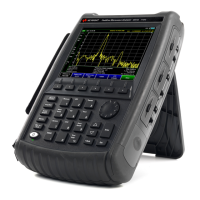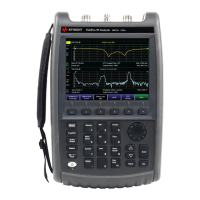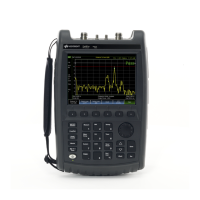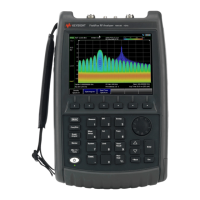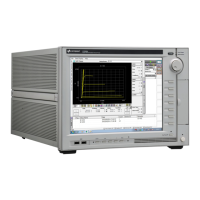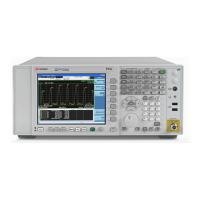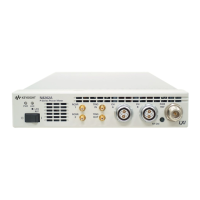Keysight N9927-90001 User’s Guide 139
Calibration for NA, CAT, and VVM Modes
—Press Meas Setup 4
—Then Transform
—Then Transform Settings
—Under Transform Stimulus Settings, set the Start and Stop frequencies to
those of the Waveguide.
—Set Stimulus = Bandpass Impulse
—Press Done
—Press Meas Setup 4 or Back
—Then Calibration Settings
—Set Media = Waveguide
—Set Cutoff Frequency. This is the absolute minimum frequency of the
waveguide. This value must be less than the Start Frequency of the
Waveguide.
Enter the calculated Effective VF value into the Velocity Factor setting.
Enhanced Response Optimization
When Enhanced Response Cal Type is selected, either for one calibration or for
CalReady, this setting optimizes the calibration based on the type of DUT
being measured. See also: CalReady Properties in “CalReady” on page 123.
This setting does NOT survive Preset.
—Press Cal 5
then More
—Then Enh.Response
— Then choose from:
— NonReciprocal
(default) An amplifier is a Non-Reciprocal device
because it has gain in the forward direction, and very high loss
(isolation) in the reverse direction. This choice provides the best
correction for non-reciprocal devices, and reasonable correction for
reciprocal devices.
— Reciprocal
A reciprocal DUT is a device in which the insertion loss
through the device is equal in both the forward (S21) and reverse
(S12) directions. A cable is a reciprocal device. This choice provides
the best correction for reciprocal devices. However, S11
measurements on non-reciprocal devices will appear to have more
return loss than the non-reciprocal choice.

